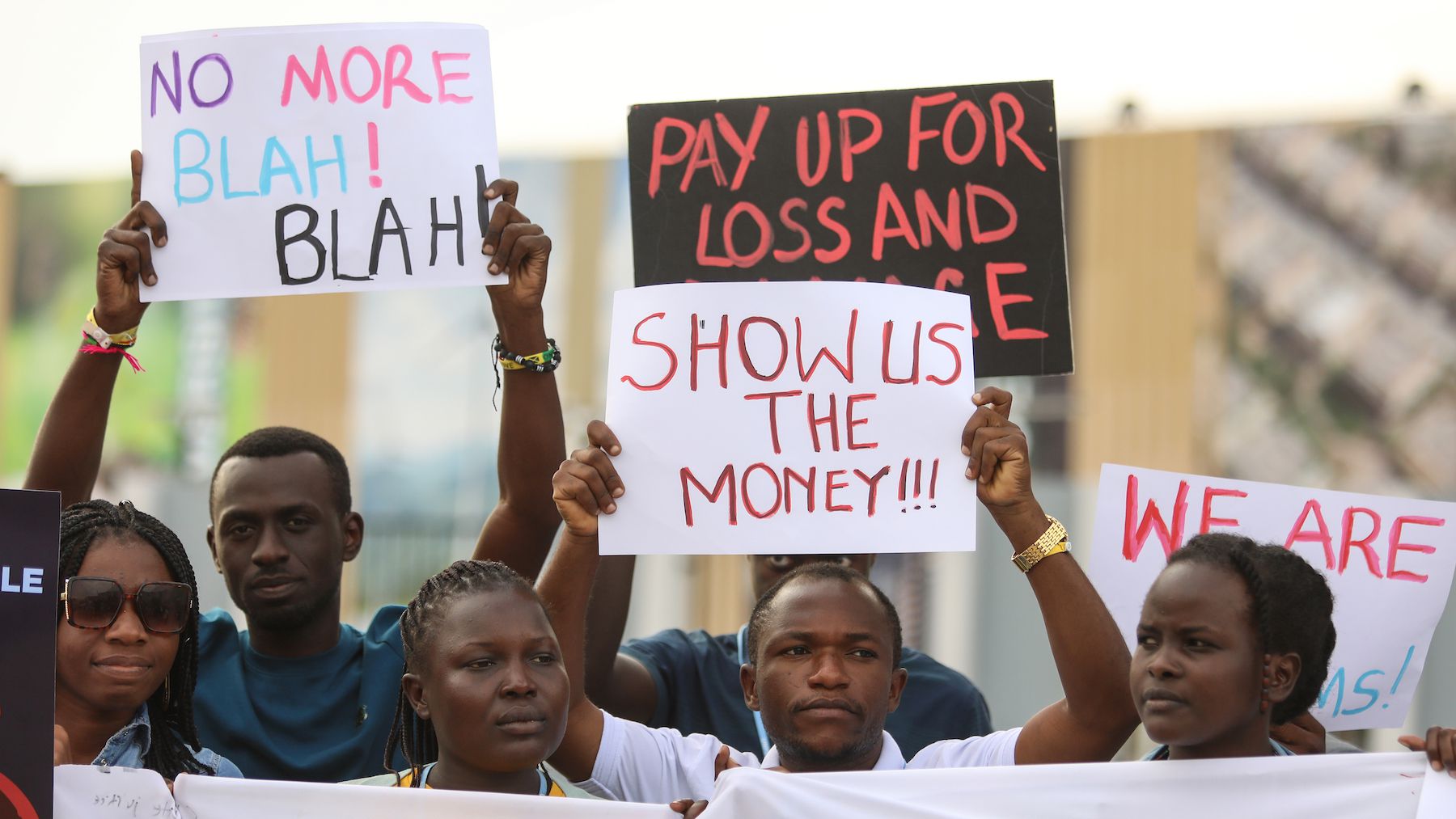
DHAKA, Bangladesh — Happy Akter spends her days checking whether the dresses, T-shirts and pants sewn in the factory where she works in Dhaka, Bangladesh, meet the quality requirements of Western brands.
Due to climate change, the work is getting hotter, and thus harder, adding to an already high-pressure environment, she said at a recent meeting at a trade union office in central Dhaka.
Just how much rising temperatures are already affecting the fashion industry’s supply chain isn’t well understood, but the impact is likely to get more severe as efforts to deliver on global climate ambitions fall short.
Halfway round the world in Sharm el-Sheikh, Egypt, policymakers have spent the last two weeks trying to hash out a new agreement to stave off that scenario at the UN’s COP27 climate summit.
Ambitions to cap global warming at 1.5 degrees Celsius above pre-industrial levels (an internationally agreed limit intended to avoid the worst impacts of climate change) hang by a thread, while efforts to establish financing for poorer climate-vulnerable countries, like Bangladesh, remain challenging.
The situation is urgent: There’s already a 50/50 chance of exceeding the 1.5 degree cap by 2030, according to a report published by Global Carbon Project, a climate science research project, on Nov. 11, and the last eight years have been the hottest on record. Even a fraction of a degree of warming can have dire consequences, increasing the frequency and extremity of climate-induced natural disasters.
In the fashion industry, that means increased vulnerability to a host of risks in its supply chains — from cotton crop failure to labour rights abuses.
As the world nears a tipping point, here’s what fashion needs to know about the key themes emerging from this year’s UN climate summit.
Where’s the Money?
Meeting climate goals costs serious money, and while billions of dollars are on the table, the public and private sectors are still far from closing the gap on climate financing.
Fashion alone will have to dig deep if it is to meet its own climate commitments: achieving net-zero emissions by 2050 will require a total investment of $1 trillion, according to non-profit Apparel Impact Institute (AII).
The industry’s financial contributions are beginning to grow, but from a low base. The AII launched a fund in June aimed at raising $250 million (and unlocking another $2 billion) in climate financing. So far, it’s raised $60 million from a handful of brands and philanthropic institutions, including Target, PVH and H&M Group. On Nov. 14, the Swedish fast fashion giant said it would allot about SEK3 billion (about $282 million) per year to reduce emissions in its supply chain.
Most companies still aren’t talking about their climate commitments in terms of hard cash — a necessary step to deliver on their goals.
“We are far from where we have to be and where we should be,” said Global Fashion Agenda chief executive Federica Marchionni, at a panel hosted by the UN Fashion Charter at COP27. There is growing momentum and a shift from talk to action; now this “has to be scaled and has to be accelerated,” she added.
Time to Get Serious About Climate Compensation
Against a backdrop of extreme heat waves and deadly floods disproportionately affecting countries in the global South, the inevitable and devastating impacts of climate change — also known as loss and damage — became impossible to ignore at this year’s COP.
Who should foot the bill for these intensifying climate disasters in poor countries least responsible for their rise is a long-standing controversy. In a major breakthrough, it made it onto COP’s official agenda this year, unlocking several new funding commitments from wealthy nations. The G7 announced an initiative with the World Bank to pre-arrange finance to support vulnerable countries ravaged by disasters, while on Friday the EU agreed to establish a fund to help address loss and damage.
Poorer countries have slammed efforts so far for not being ambitious enough.
For fashion, which has built its supply chains in some of the most climate-sensitive regions in the world, countries’ preparedness for extreme weather and natural disasters will have a bearing on the industry’s vulnerability to social, operational and financial risks — from failed cotton crops to flooding and heat stress in garment manufacturing hubs. Without substantial financing in place, companies themselves could be looking to foot the bill on necessary climate resilience investments.
Competition Law Is a Climate Challenge
It turns out championing collaboration over competition — a common refrain for fashion’s climate advocates — is easier said than done.
Collaborative initiatives to make products more sustainable in industries including banking and consumer goods packaging have been shelved or outright abandoned due to antitrust risk concerns, according to a report by the International Chamber of Commerce published Nov. 10.
The thorny issue has already materialised in fashion: An unsuccessful push by brands and retailers to address some of fashion’s wasteful and inefficient business practices at the start of the pandemic, known as Rewiring Fashion, resulted in a series of raids by European Union antitrust regulators in May, Reuters reported.
Regulators are now facing pressure to provide clarification over the legal risks associated with climate-friendly collaborations and exemptions to enable action.
No More Greenwashing
In the midst of splashy corporate panels and announcements that have come to be expected at COP, the UN released a report demanding a “zero-tolerance” crackdown on hollow climate commitments from businesses, and detailing recommendations on how they should “walk the talk” on their net-zero promises.
“Using bogus net-zero pledges to cover up massive fossil-fuel expansion is reprehensible,” said UN Secretary General Antonio Guterres. “The sham must end.”
Fashion has faced its own greenwash reckoning this year, with regulators in the UK, Netherlands and Norway taking aim at brands’ green marketing claims, and H&M now facing class action lawsuits in two US states. Companies increasingly need to sharpen their climate commitments — and how they communicate them to consumers.
But activations around this year’s COP have largely reflected an industry still defining targets and figuring out how to deliver on them. Action continues to lag the pace of change needed to cut emissions and avert climate disaster — much to the frustration of activists and industry-watchers.
“Stop lying, stop greenwashing and start placing people and the planet over profit,” climate activist Sophia Kianni said during the UN Fashion Charter’s COP session.



